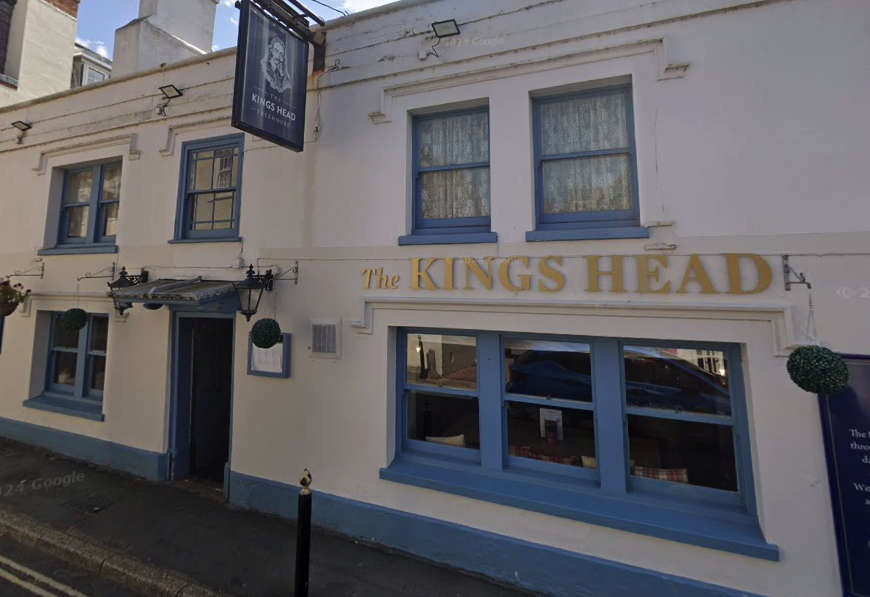
A five-year plan for conserving and enhancing the Isle of Wight’s Area of Outstanding Natural Beauty (AONB) was unanimously approved by councillors yesterday.
Full Council, one of County Hall’s prime decision-making bodies, decided to go ahead with the Isle of Wight National Landscape Partnership’s 2025 -2030 Management Plan.
Now referred to as national landscapes, AONBs are specially protected by the Countryside and Rights of Way Act 2000.
The DEFRA-funded partnership is made up of a wide range of national and local organisations with links to the AONB, including the Isle of Wight Council, the Environment Agency, English Heritage, the Hampshire and Isle of Wight Wildlife Trust and the Isle of Wight Biodiversity Partnership.
Cllr Julie Jones-Evans, representative for Newport Central, said:
“It’s really interesting to read about the butterfly species that have been lost from the Island.
“Whereas our Island status can protect us, so we still have the dormouse and and red squirrel, the butterflies apparently won’t get reintroduced without human intervention.
“Is that something that might happen?”
Cabinet member for planning, coastal protection and flooding Cllr Paul Fuller replied:
“Yes, there are works currently underway concerning the butterflies and the blue butterflies that we have on our chalk downlands.
“Very important and we’ve received government funding as I understand to be able to enhance that.
“There are lot of projects that we receive Defra funding from and this is one of the areas that is seen as a priority because our species of butterfly are in decline in many parts.”
Six overaching aims were set out in the partnership’s 157-page document: upholding the statutory purpose of the AONB, encouraging opportunities to enhance its landscape and seascape and increasing awareness of the area.
Also included were advancing understanding of the national landscape through guidance documents and publications, monitoring ‘forces for change’ likely to affect it and assisting rural economic development that supports conservation and enhancement.
These objectives link to the plan’s four sections: place, climate, nature and people.
‘Place’ relates to protected landscapes and coastal areas within the AONB, geodiversity, the historic environment and tranquility and dark skies.
Geodiversity is the variety of rocks, minerals, fossils, natural processes, landforms and soils that shape the Earth.
‘Climate’ includes climate change and mitigation solutions, minerals and soils, air and water and energy.
‘Nature and Land Use’ involves wildlife, farming and forestry and woodland management.
‘People’ divides into arts and culture, sustainable communities, the visitor economy and access and recreation.
The document’s introductory statement said:
“Policies and the decisions taken, based on sound evidence around the natural and historic environment and landscape, have conserved and enhanced the special characteristics of the Island’s finest landscapes, giving the AONB a strong identity and ‘sense of place’.
“Anthropogenic climate change has, and continues, to take place in a way which threatens the conservation and enhancement the natural beauty of the area as well as the needs of local communities, rural businesses and the land use sector.
"Mitigation of these influences are an important part of this Plan.
“Farming and woodland management remain central to the continued conservation and enhancement of the beauty of the landscape.
“New technologies have been appropriately accommodated through careful consideration and mitigation for their impact upon the AONB, bringing economic and social benefits and retaining the intrinsic special qualities of the environment.
“Economic benefit has been brought directly to local communities through sustainable tourism and business activities.”

 Big Give 2024 Sees Huge Donation For Isle Of Wight Charity
Big Give 2024 Sees Huge Donation For Isle Of Wight Charity
 Growing Resistance Over 14 Home Development Plans For Northwood
Growing Resistance Over 14 Home Development Plans For Northwood
 Parish Council Objects To Waste Recycling Plant At Knighton
Parish Council Objects To Waste Recycling Plant At Knighton
 Highways Improvement Work Continues In The New Year
Highways Improvement Work Continues In The New Year
 Yarmouth's Kings Head To Feature Bed And Breakfast Accommodation
Yarmouth's Kings Head To Feature Bed And Breakfast Accommodation
 New Low Cost Flats Could Come To Ryde - If Plans Get Approved
New Low Cost Flats Could Come To Ryde - If Plans Get Approved
 Casualty Airlifted To Hospital Following Serious Overnight Crash Near Porchfield
Casualty Airlifted To Hospital Following Serious Overnight Crash Near Porchfield
 Engine Problems Lead To Yarmouth RNLI Callout To Osborne Bay
Engine Problems Lead To Yarmouth RNLI Callout To Osborne Bay
 Ryde Academy Students Donate To Two Worthy Causes At Christmas
Ryde Academy Students Donate To Two Worthy Causes At Christmas
 Road Improvement Works To Get Underway From The Very Start Of The New Year
Road Improvement Works To Get Underway From The Very Start Of The New Year
 Isle of Wight Youth Trust Benefits From Big Give Support
Isle of Wight Youth Trust Benefits From Big Give Support
 Council Chair 'Furious' Over Floating Bridge Replacement Fiasco
Council Chair 'Furious' Over Floating Bridge Replacement Fiasco
 Fire Service Travel To Island Contributes To Huge Budget Overspend
Fire Service Travel To Island Contributes To Huge Budget Overspend
 Department Approaching Completion In Ryde As Opening Date Announced
Department Approaching Completion In Ryde As Opening Date Announced
 Guidance Issued Over Sharps Disposal As Waste Teams At Risk
Guidance Issued Over Sharps Disposal As Waste Teams At Risk
 Police Warnings Over E-Scooters Ahead Of Christmas Day
Police Warnings Over E-Scooters Ahead Of Christmas Day
 Controversial Freshwater Housing Proposal Turned Down
Controversial Freshwater Housing Proposal Turned Down
 Rare Mantis Shrimp Discovery Made In Waters Off Isle Of Wight
Rare Mantis Shrimp Discovery Made In Waters Off Isle Of Wight
 Man In 50s Confirmed Dead Following Newport Crash
Man In 50s Confirmed Dead Following Newport Crash
 Pedestrian In Hospital With Serious Injuries Following Early Morning Motorcycle Crash
Pedestrian In Hospital With Serious Injuries Following Early Morning Motorcycle Crash


